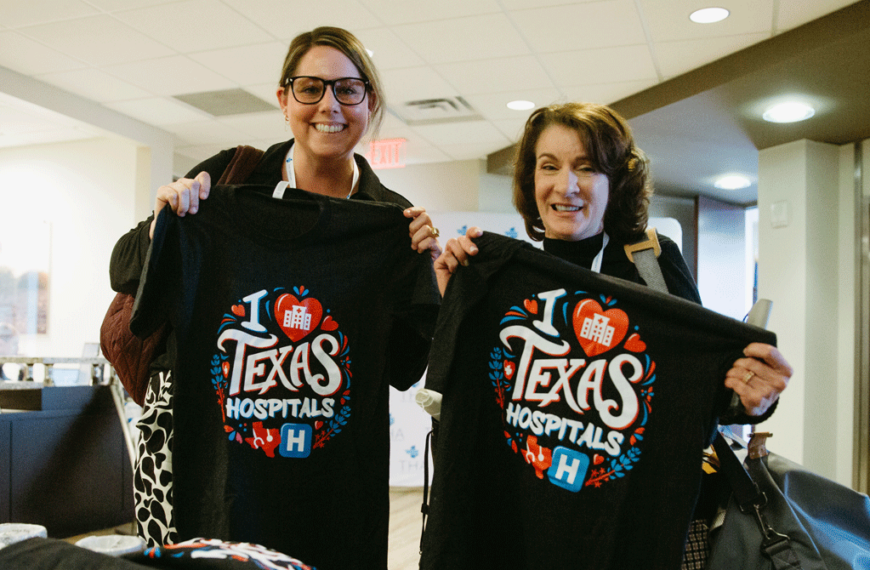During the summer months of June, July and August, average temperatures in Texas often exceed 90°F and can reach into the triple digits in many regions.
As the summer temperatures continue to rise, Texas hospitals must prepare to face the challenges of extreme heat and potential emergencies. The rise in temperatures can pose significant risks to both patients and health care professionals. However, with proper emergency preparedness operations and the implementation of heat precautions, hospitals can create a safe environment for everyone and provide uninterrupted care to their communities. Texas hospitals and public health officials work year-round to ensure preparedness and safety for severe weather disasters. Still, hospitals can brush up on their emergency preparedness plans and the strategies outlined below to protect patients and staff during the scorching summer months.
Here’s what you can do to heatproof your hospital:
- Enhanced Emergency Preparedness. Hospitals should review and update their emergency response plans to account for the unique challenges posed by extreme heat. The plans must include specific protocols to address heat-related illnesses and ensure patient safety during power outages or other weather-related emergencies. Regular drills and exercises can help staff familiarize themselves with the procedures, allowing for a swift and efficient response in the event of a crisis.
- Adequate Infrastructure. One crucial aspect of hospital preparedness is ensuring the availability of robust infrastructure. Hospital facilities should be equipped with backup power generators to ensure uninterrupted operation during power failures. Additionally, hospitals should have contingency plans to maintain temperature-controlled environments, such as cooling systems and temperature monitoring devices, to safeguard patient comfort and well-being.
- Education and Training. Educating staff members about the risks associated with extreme heat and heat-related illnesses is vital. Hospital administrators should provide training on identifying symptoms of heat-related illnesses, proper hydration techniques, and the implementation of cooling measures. This knowledge equips health care professionals to recognize early signs of heat exhaustion or heatstroke in patients and take prompt action to prevent further complications.
- Heat-Resistant Patient Care Areas. Designating cool zones within the hospital can help patients cope with the heat and reduce the risk of heat-related illnesses. These areas should be equipped with air conditioning, fans, and water dispensers to provide relief from high temperatures. Patients vulnerable to heat, such as the elderly, infants, and individuals with chronic illnesses, should be prioritized and kept in these temperature-controlled areas.
- Monitoring and Early Intervention. Continuous monitoring of patient conditions is crucial during periods of extreme heat. Hospitals should utilize innovative technology and systems to track patients’ vital signs and body temperature in real time. Implementing automated alerts for abnormal readings can enable health care providers to intervene promptly and prevent severe heat-related complications. Regular check-ups and temperature screenings should be conducted to identify at-risk patients and provide timely intervention.
- Staff Well-being. Hospitals should prioritize the well-being of their staff during the summer months. Provide employees with access to cool drinking water stations and break areas equipped with air conditioning. Implementing rotating shifts or flexible schedules can minimize exposure to peak heat hours. Adequate personal protective equipment should also be provided to ensure staff comfort and safety.
- Public Awareness Campaigns. According to the Texas Department of Health and Human Services’ Heatstroke Task Force , Texas leads the nation in hot-car deaths among children and heatstroke is the leading cause of non-crash, vehicle-related deaths in children younger than 15. Hospitals have a responsibility to educate the public on the risks of extreme heat and how to stay safe. Launching public awareness campaigns through social media, local news outlets and community events can help disseminate information on heat safety measures. Emphasize the importance of staying hydrated, wearing appropriate clothing and seeking medical assistance if symptoms of heat-related illnesses arise.
With proper emergency preparedness operations and the implementation of extreme heat precautions, hospitals can ensure the safety and well-being of their patients during the scorching summer months. Enhanced emergency response plans, adequate infrastructure, staff education and heat-resistant patient care areas are all crucial components of hospital preparedness. By prioritizing patient and staff safety, hospitals can navigate the challenges of extreme heat and provide optimal care even in the harshest summer conditions.
Most Recent Articles from The Scope
New Channels: THA’s Hospital Communicators Summit
Small and large, rural and urban, independent and affiliated – the characteristics of hospitals across Texas are as diverse as the state itself. But one thing all hospitals and systems…
Congratulations to THA’s February Newsmakers
THA’s Newsmakers highlights leaders from THA member hospitals and health systems making headlines in Texas health care. Please join in congratulating our February Newsmakers: Scott Lillibridge, MDDHR Health Global epidemiology…
HOSPAC: Agents of Change
Out of all the ways the Texas Hospital Association pushes for better health care in Texas, HOSPAC – the only political action committee that represents all Texas hospitals – may…
THA’s 2024 Annual Conference: Unity in the Face of Challenge
Last week, THA’s Annual Conference, a hallmark event for health care professionals statewide, hosted nearly 500 attendees, speakers and sponsors in Dallas, Texas – the largest turnout since the pandemic.…




